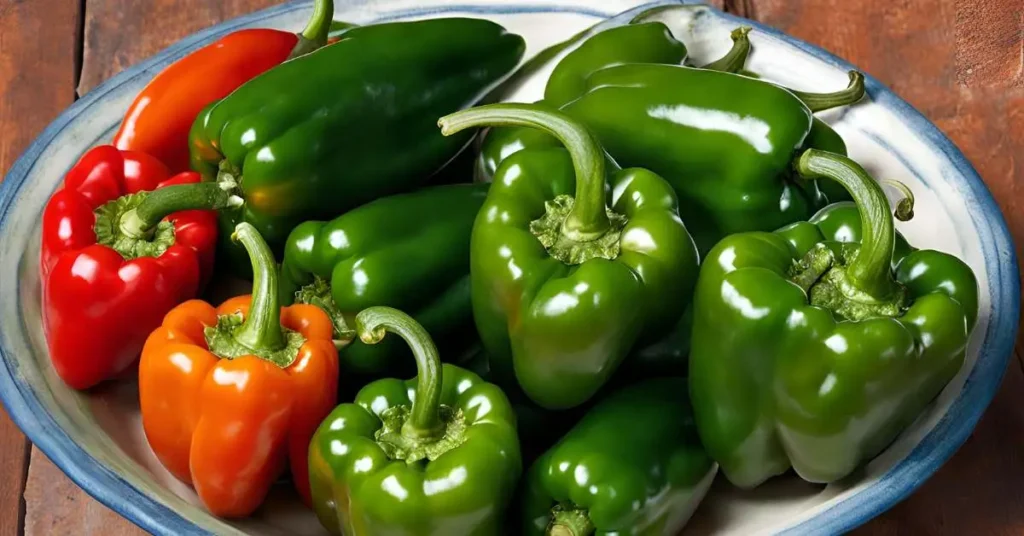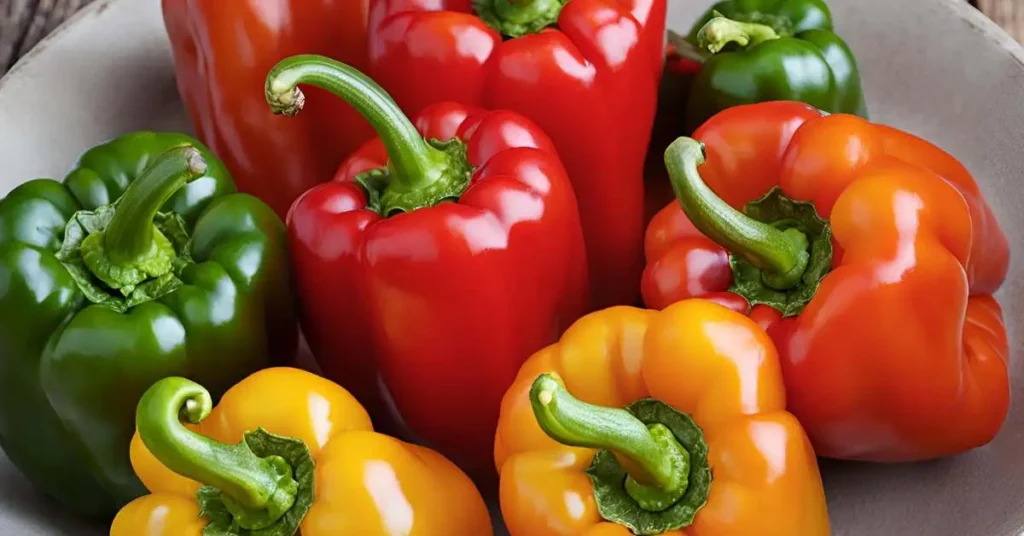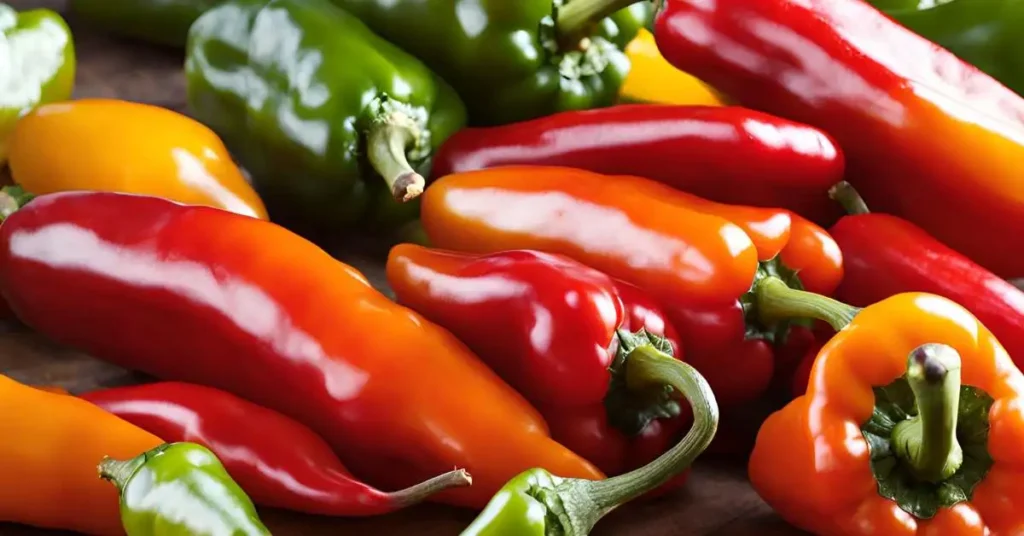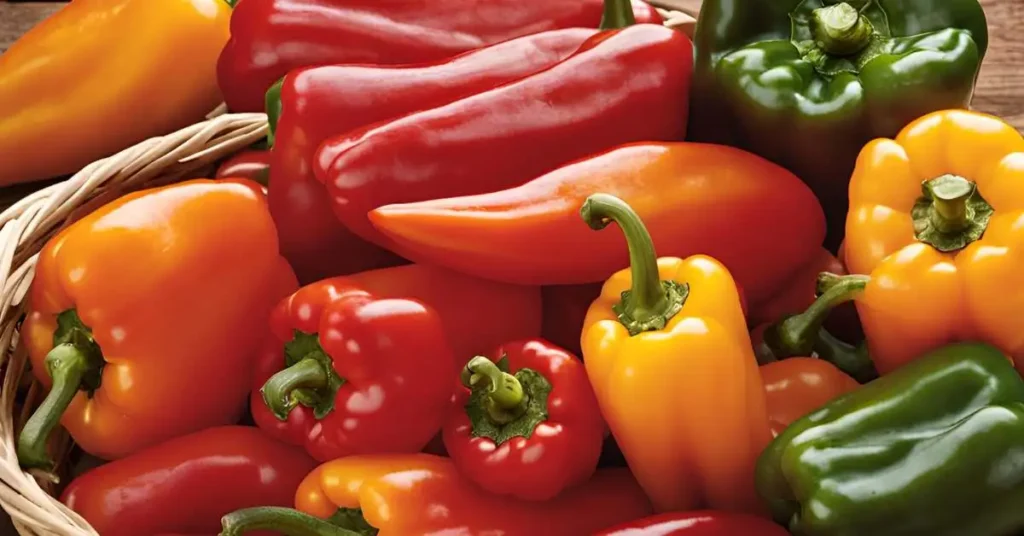Today, let’s dive into a delightful portillo’s sweet peppers recipe featuring sweet peppers—those vibrant bursts of flavor that add so much zest to our dishes.
Whether you’re looking to spice up your appetizers or complement a hearty main course, these Portillo sweet peppers are sure to steal the show!
Imagine tender sweet peppers, perfectly roasted to bring out their natural sweetness, paired with a medley of savory herbs and a touch of garlic-infused olive oil. This combination not only tantalizes the taste buds but also adds a colorful flair to any meal.
Table of Content
- 1 How did I learn this dish?
- 2 Recipe
- 3 Method of Instruction
- 4 Recipe Video
- 4.1 Serving Ideas for Halal Dishes
- 4.2 Tips for Using Halal Ingredients Creatively
- 4.3 Creative Ingredient Substitutes
- 4.3.1 1. Coconut Milk for Cream
- 4.3.2 2. Vegetable Broth for Chicken Broth
- 4.3.3 3. Maple Syrup for Honey
- 4.3.4 4. Tofu for Paneer
- 4.3.5 5. Quinoa for Couscous
- 4.3.6 6. Applesauce for Oil
- 4.3.7 7. Agave Nectar for Sugar
- 4.3.8 8. Almond Flour for Wheat Flour
- 4.3.9 9. Soy Milk for Regular Milk
- 4.3.10 10. Greek Yogurt for Sour Cream
- 4.4 You May Also Like
- 5 FAQ’S
- 5.1 What kind of peppers does Portillo’s use?
- 5.2 How do you prepare sweet peppers?
- 5.3 What makes sweet peppers sweet?
- 5.4 What do Italians call sweet peppers?
- 5.5 What are Italian sweet peppers called?
- 5.6 Are Italian sweet peppers hot?
- 5.7 What goes well with sweet peppers?
- 5.8 Can you boil sweet peppers?
- 5.9 Can you eat sweet peppers without cooking?
- 5.10 Why are sweet peppers so expensive?
- 5.11 Do sweet peppers have any spices?
- 5.12 Which color pepper is best?
- 6 Remarks
How did I learn this dish?
You know, learning to cook this dish has been quite a journey! I don’t know how it started exactly, but I think it began with a curiosity to recreate those amazing flavors I tasted somewhere special. But I can tell you that each time I make these Portillo sweet peppers, there’s a sense of anticipation, like rediscovering a favorite taste from memory.
I’ve always wanted to share more friendly sweet peppers recipes easy—ones that bring people together over delicious food. For me, this dish holds a special place because it reminds me of gatherings with loved ones, where we’d enjoy simple yet incredibly satisfying bites.
As for the origin of portillos sweet peppers recipe, it’s fascinating how peppers have been a part of culinary history for centuries. Here are a few interesting connections:
- Ancient Origins: Peppers were first cultivated in Central and South America over 6,000 years ago.
- Cultural Significance: They’re celebrated in various cuisines worldwide, from spicy Mexican dishes to sweet Mediterranean treats.
- Health Benefits: Packed with vitamins and antioxidants, peppers have been valued for their nutritional benefits throughout history.
It’s amazing how a simple ingredient can hold so much flavor and history, isn’t it?
Recipe
Discover the delightful flavors of sweet Italian peppers transformed into a culinary masterpiece that’s both vibrant and comforting.
Category: Side dish
Cuisine: Mediterranean
Serving Size: 6 servings
Prep Time: 10 minutes
Cook Time: 25 minutes
Calories per Serving: 80-100 calories
Ingredients
| 18 sweet peppers |
| 1/4 cup olive oil |
| 3 cloves garlic, minced |
| 1 teaspoon dried oregano |
| Salt and pepper, to taste |
Equipment:
| Baking sheet |
| Oven |
| Mixing bowl |
| Spoon or spatula |
| Knife |
Method of Instruction
Before we get started, it’s crucial to wash our hands thoroughly, ensuring everything stays clean and safe.
- Firstly, preheat your oven to 400°F (200°C) to get it nice and toasty for our peppers. While that’s heating up, let’s move on to preparing our peppers. Slice the sweet peppers in half lengthwise, and remove the seeds and membranes. It’s a simple task, but it makes a big difference in texture!
- Next, place the pepper halves on a baking sheet, making sure they’re all facing up to hold our filling perfectly. Now, grab a bowl and mix together our stuffing: a delightful blend of halal ingredients like cooked rice, ground beef (or a halal meat of your choice), diced tomatoes, onions, garlic, and a pinch of your favorite spices—I prefer a mix of cumin, paprika, and a touch of cinnamon for that extra something special.
- Gently spoon the filling into each pepper half, making sure to pack it in generously but not too tightly. Once they’re all filled, pop the baking sheet into the preheated oven and let our peppers bake for about 20–25 minutes, or until the peppers are tender and the filling is heated through.
- As our peppers bake, you’ll notice the kitchen filling with enticing aromas—just a few more minutes until they’re ready to be enjoyed! Once done, take them out of the oven and let them cool slightly. This brief wait makes the flavors meld beautifully.
- Voilà! Our Portillo sweet peppers are now ready to serve. Whether as a delightful side dish or a main course, these stuffed peppers are sure to impress with their vibrant colors and delicious flavors. Enjoy!
Recipe Video
Hot Peppers Portillo’s
This is the video about how to make Hot Peppers Portillo’s Recipe at home.
Author: Cooking with Chicag
Rated: 4.2 of 5.0 from 379 reviews.
Serving Ideas for Halal Dishes
1. Stuffed Peppers Surprise
Transform leftover stuffed peppers into a hearty breakfast hash with eggs and a sprinkle of cheese for a morning delight!
2. Rice Bowl Remix
Turn leftover rice into flavorful rice bowls topped with grilled vegetables and a tangy yogurt sauce for a quick lunch fix.
3. Kebab Kaboom
Skewer leftover kebabs with fresh veggies and serve on flatbreads with a zesty tahini dressing for a Middle Eastern-inspired wrap.
4. Pita Pocket Pleaser
Stuff pita pockets with falafel balls and crunchy veggies, drizzle with homemade hummus, and enjoy a portable Mediterranean snack.
5. Salad Sensation
Transform grilled chicken into a vibrant salad with mixed greens, avocado slices, and a citrusy vinaigrette for a refreshing meal.
6. Wrap It Up
Wrap leftover lamb in soft tortillas with mint yogurt sauce and crunchy lettuce for a quick and satisfying dinner wrap.
7. Soup Makeover
Blend leftover lentil soup into a creamy puree and serve with crusty bread and a dollop of Greek yogurt for a comforting supper.
8. Pasta Party
Toss leftover pasta with cherry tomatoes and basil pesto, top with grated Parmesan, and bake for a cheesy pasta bake the whole family will love.
9. Risotto Revamp
Turn leftover risotto into crispy arancini balls stuffed with mozzarella, deep-fry until golden brown, and serve with marinara sauce for a gourmet appetizer.
10. Sweet Treat
Use leftover fruit salad to make refreshing popsicles for a guilt-free dessert that’s perfect on a hot summer day.
Tips for Using Halal Ingredients Creatively
1. Embrace Leftovers
Utilize leftover meats like grilled chicken or lamb in wraps, salads, or soups for quick and flavorful meals.
2. Batch Cooking Magic
Prepare large batches of rice or pasta ahead and repurpose them into various dishes throughout the week.
3. Versatile Sauces
Create versatile sauces like tahini, yogurt-based dressings, or pesto to elevate dishes without extra effort.
4. Freeze for Later
Freeze leftover soups or stews in individual portions for convenient meals on busy days.
5. Blend It Up
Blend fruits into smoothies or purees to add a burst of flavor to desserts or breakfast bowls.
6. Creative Salads
Use fresh greens, nuts, and fruits to create vibrant salads that complement any main dish.
7. Grill and Chill
Grilled vegetables or meats can be chilled and used in sandwiches, wraps, or pasta salads for a refreshing twist.
8. Homemade Snacks
Make your own snacks like granola bars or energy bites using oats, nuts, and dried fruits for a healthy treat.
9. Spice Up Your Dishes
Experiment with herbs and spices to create unique flavor profiles that enhance your dishes.
10. Mindful Portioning
Practice mindful portion control to reduce food waste and enjoy meals without overindulging.
Explore these tips to make the most of your halal ingredients and enjoy delicious, varied meals every day!
Creative Ingredient Substitutes
1. Coconut Milk for Cream
Swap heavy cream with coconut milk for a dairy-free alternative that adds a hint of tropical sweetness to curries and desserts.
2. Vegetable Broth for Chicken Broth
Use vegetable broth instead of chicken broth to keep soups and stews vegetarian-friendly without sacrificing flavor.
3. Maple Syrup for Honey
Substitute honey with maple syrup in baking or dressings for a rich, earthy sweetness.
4. Tofu for Paneer
Replace paneer with tofu in Indian dishes for a lighter, plant-based protein alternative that absorbs flavors well.
5. Quinoa for Couscous
Opt for quinoa over couscous for a gluten-free grain option packed with protein and nutrients.
6. Applesauce for Oil
Use applesauce in place of oil or butter in baking recipes to reduce fat content while keeping cakes and muffins moist.
7. Agave Nectar for Sugar
Substitute agave nectar for sugar in beverages and desserts for a lower glycemic index and a milder sweetness.
8. Almond Flour for Wheat Flour
Replace wheat flour with almond flour in baking for a gluten-free alternative that adds a nutty flavor and moist texture.
9. Soy Milk for Regular Milk
Use soy milk instead of regular milk in recipes for a dairy-free option that works well in cooking and baking.
10. Greek Yogurt for Sour Cream
Swap sour cream with Greek yogurt in dips and sauces for a creamy texture with added protein and probiotics.
Discover these creative substitutes to adapt recipes to your dietary preferences and needs, enhancing flavor and nutritional value along the way!
You May Also Like
FAQ’S
What kind of peppers does Portillo’s use?
Portillo’s uses sweet Italian peppers, known for their mild flavor and vibrant color.
How do you prepare sweet peppers?
Sweet peppers are typically washed, seeded, and sliced for various culinary uses like sautéing, grilling, or raw in salads.
What makes sweet peppers sweet?
The natural sugars in sweet peppers, particularly varieties like bell peppers, give them their mild, sweet flavor profile.
What do Italians call sweet peppers?
Italians refer to sweet peppers as “peperoni,” distinguishing them from spicy peppers.
What are Italian sweet peppers called?
Italian sweet peppers are often called “peperoni dolci” or simply “dolci.”
Are Italian sweet peppers hot?
No, Italian sweet peppers are not hot; they are mild in flavor and not spicy.
What goes well with sweet peppers?
Sweet peppers pair well with dishes like pasta, sandwiches, stir-fries, and as toppings for pizzas.
Can you boil sweet peppers?
Yes, you can boil sweet peppers briefly to soften them before stuffing or incorporating into recipes.
Can you eat sweet peppers without cooking?
Yes, sweet peppers can be eaten raw, sliced, or whole, making them versatile for salads, dips, and snacking.
Why are sweet peppers so expensive?
Sweet peppers can be more expensive due to their cultivation requirements, delicate nature, and sometimes imported origins.
Do sweet peppers have any spices?
Sweet peppers are naturally mild and sweet, typically not spiced, although they can be seasoned with herbs and other spices for flavor enhancement.
Which color pepper is best?
The best color of pepper depends on personal preference and recipe needs; each color (red, yellow, orange, green) offers a slightly different flavor and sweetness level.
Remarks
Explore the versatility of sweet peppers in this recipe, adding a touch of Italian flair to any meal. Elevate your dining experience with these vibrant and flavorful peppers!



